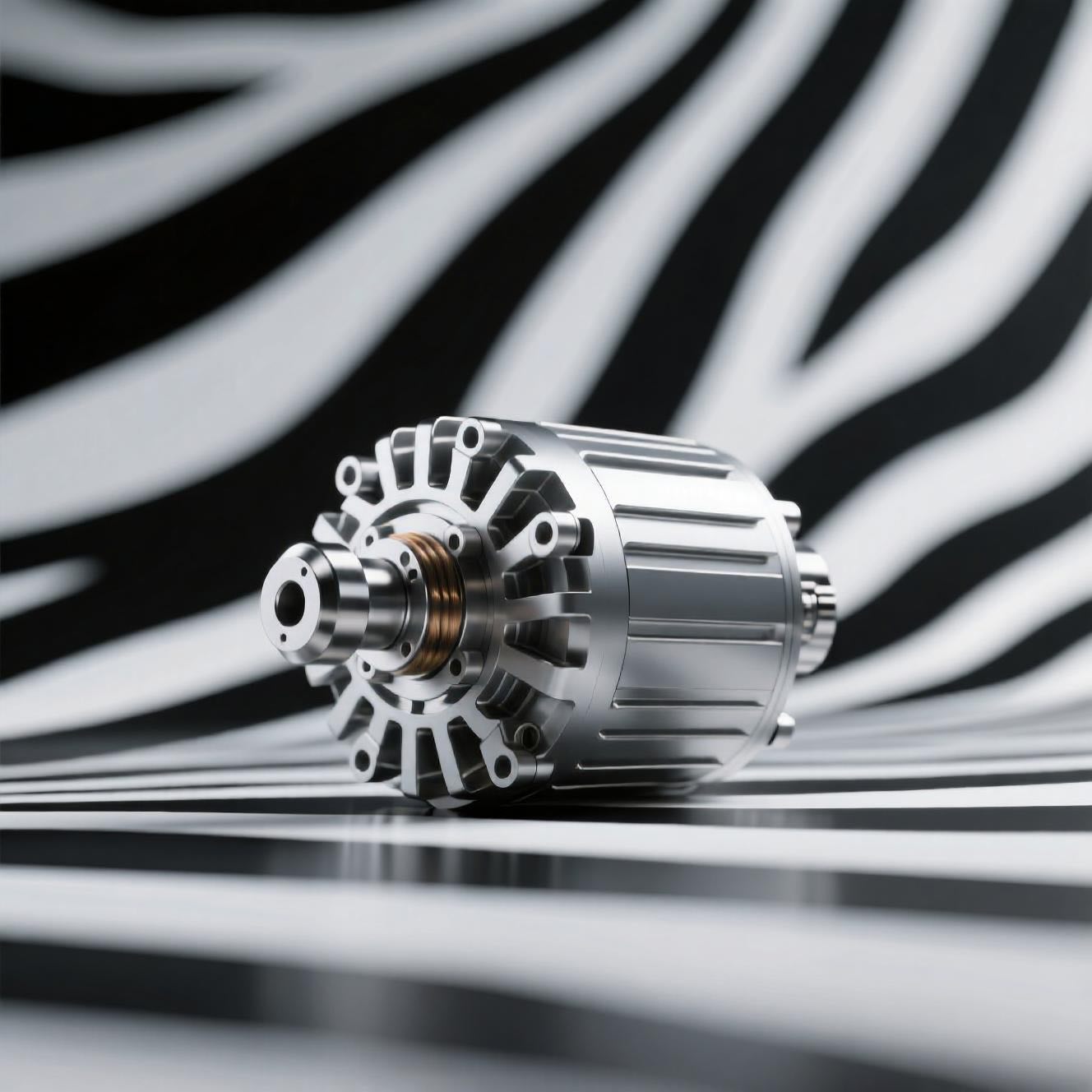
By combining a zebra-inspired optimization algorithm with sliding mode control, researchers built a smarter brushless DC motor controller that adapts in real time, delivering faster, more stable speed tracking and stronger disturbance rejection than traditional methods.
Brushless DC motors (BLDC motors) are everywhere — from electric vehicles 🚗⚡ to drones 🚁, industrial robots 🤖, and home appliances 🌀. They’re lighter, quieter, and more efficient than their brushed cousins. But here’s the challenge: controlling their speed and torque precisely, especially under sudden changes in load or operating conditions, is tricky.
Traditionally, engineers rely on proportional–integral (PI) controllers. They’re simple, reliable, and widely used. But when the system faces disturbances — like a sudden load change — PI controllers often struggle with overshoot, slow recovery, or even instability.
That’s where advanced control strategies step in. The research we’re discussing today introduces a new speed controller that combines:
The result? A smarter BLDC motor controller that adapts in real time, tracks speed more precisely, and rejects disturbances better than older methods.
BLDC motors are already a favorite in industry because they:
✅ Deliver high torque-to-weight ratios
✅ Run with high efficiency and low noise
✅ Are durable since they lack brushes that wear out
But they come with challenges:
The conventional field-oriented control (FOC) approach solves some of this by decoupling torque and flux control. But FOC still depends heavily on PI controllers, which don’t adapt well in fast-changing conditions.
One alternative is the Sliding Mode Controller (SMC). Think of it like forcing the system to “slide” along a carefully designed trajectory until it reaches the target speed.
So while SMC improves over PI, it still isn’t perfect.
The Zebra Optimization Algorithm (ZOA) is a bio-inspired AI method proposed in 2022. It takes inspiration from how zebras:
Biomimicry means taking inspiration from nature’s survival tricks to design better technology. Just as birds inspired airplanes and lotus leaves inspired waterproof coatings, zebras inspired this optimization algorithm. Here, biomimicry helps DC motors run smarter and smoother.
In the algorithm:
This clever mix of exploration and exploitation makes ZOA a powerful optimization tool. And here, it’s used to continuously tune the sliding mode controller gains in real time.
The researchers designed a new speed controller by embedding ZOA into the Exponential Reaching Law-based Sliding Mode Controller (ERLSMC).
🔑 Here’s how it works:
In simpler words: Instead of fixing the controller parameters in advance, the zebra herd constantly explores and adapts them on the fly.
The team tested their controller in MATLAB/Simulink with a BLDC motor model. They compared four approaches:
The researchers didn’t stop at simulations — they built a real test setup:
This confirmed that the zebra-powered controller isn’t just a simulation trick — it works in practice too ✅.
The new control strategy can have major real-world impacts:
Since the method is simple, lightweight, and doesn’t need massive training data, it’s also practical for embedded systems.
The paper also points to future research directions:
This research shows how biomimicry — in this case, learning from zebras 🦓 — engineers can solve complex problems in DC motor control. By combining the robustness of Sliding Mode Control with the adaptability of Zebra Optimization, the proposed controller achieves:
🚀 Faster speed tracking
🎯 Minimal overshoot
🛡️ Strong disturbance rejection
⚡ Real-time adaptability
For industries that rely on brushless DC motors, this could mean more efficient, stable, and smarter machines.
So next time you see a zebra at the savanna 🐾, remember: it might just hold the secret to the future of motor control.
🔌 Brushless DC Motor (BLDC) - An electric motor that runs on direct current but uses electronics instead of brushes to switch the magnetic fields. It’s more efficient, quieter, and longer-lasting than brushed motors.
🎛️ Field-Oriented Control (FOC) - A smart control method that decouples torque and magnetic flux in a motor, making it easier to control speed and position precisely. Think of it as giving your motor GPS directions instead of vague hints.
➕ Proportional–Integral (PI) Controller - A basic control system that adjusts outputs by looking at how far off you are (error) and how long you’ve been off. Simple, widely used, but not always great with sudden changes.
📉 Sliding Mode Control (SMC) - A robust control method that forces the system to “slide” along a stable path until it reaches the desired state. It’s great at handling disturbances, but can cause some annoying oscillations called chattering. - More about this concept in the article "Quadrotor Drones Conquer the Sky 🚁".
📈 Exponential Reaching Law (ERL) - A rule in sliding mode control that makes the system approach its target smoothly and quickly using exponential decay. It reduces overshoot but still needs fine-tuning.
🦓 Zebra Optimization Algorithm (ZOA) - A bio-inspired AI algorithm based on how zebras graze for food and escape predators. It searches for the “best solution” by imitating survival strategies, helping controllers adapt in real time.
⚙️ Overshoot - When a motor (or any system) goes past the target speed or value before settling back. Like pressing the gas too hard and overshooting the speed limit. - More about this concept in the article "Floating Through Curves: Magnetic Levitation for Pipe Maintenance 🧲🚰".
🔄 Load Regulation - How well a motor maintains its speed when the load changes (e.g., a robot arm suddenly lifting a heavier object). Good load regulation = steady performance.
Source: Chao, K.-H.; Huang, K.-H.; Guo, Y.-H. Design of a Brushless DC Motor Drive System Controller Integrating the Zebra Optimization Algorithm and Sliding Mode Theory. Electronics 2025, 14, 3353. https://doi.org/10.3390/electronics14173353